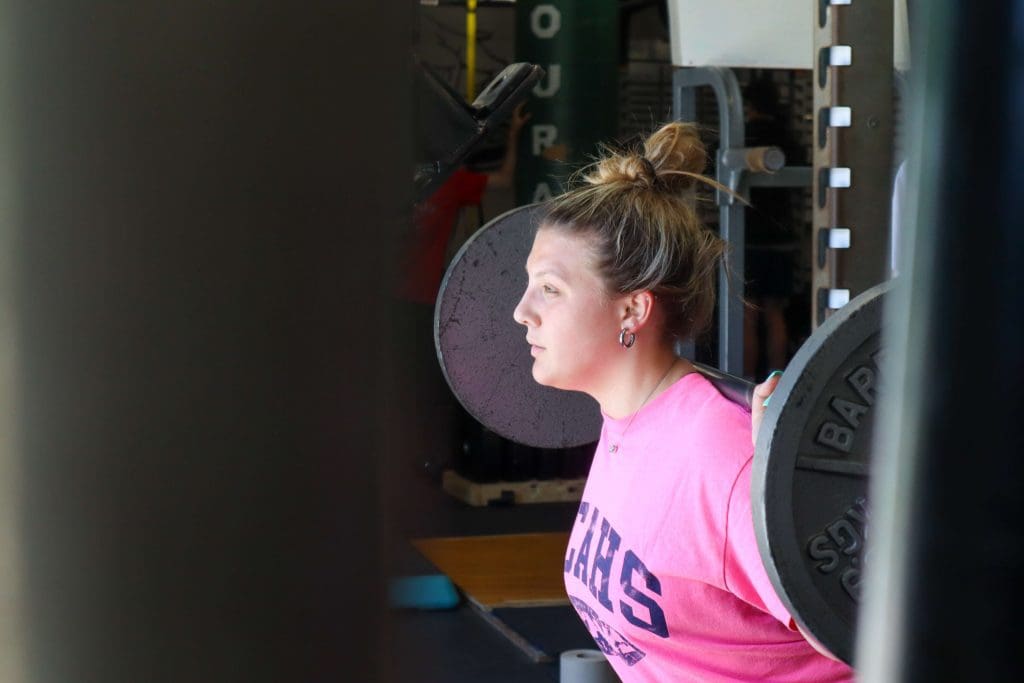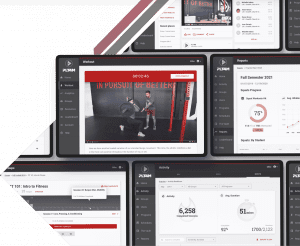Female athlete training at the middle and high school level deserves our attention. While significant strides and improvements have been made to get more young women into the weight room, there is more to be done. First, we discuss the importance of strength and conditioning for all student-athletes, regardless of gender. Next, we break down 5 keys to success when creating more opportunities for female athlete training at your school. As a bonus, we include stories and spotlights from teachers and coaches across the country.
Female Athlete Training – In A Perfect World
In a perfect world, female athletes participate as much as their male counterparts in strength and conditioning programs. Studies and stories have documented the vast benefits of resistance training for all athletes.
In summary, four of the key benefits include:
Injury prevention amongst athletes
Proper long-term athletic development for ALL students
Improved athletic performance and long-term health
Increased safety in the gym and on the field
Notice in all these benefits listed that there is no mention of gender. While we have historically assumed that football players and other male athletes will benefit more from the weight room than other athletes, that is not the case. So while everyone can benefit from the weight room in a perfect world, what is actually happening at high schools across the country?
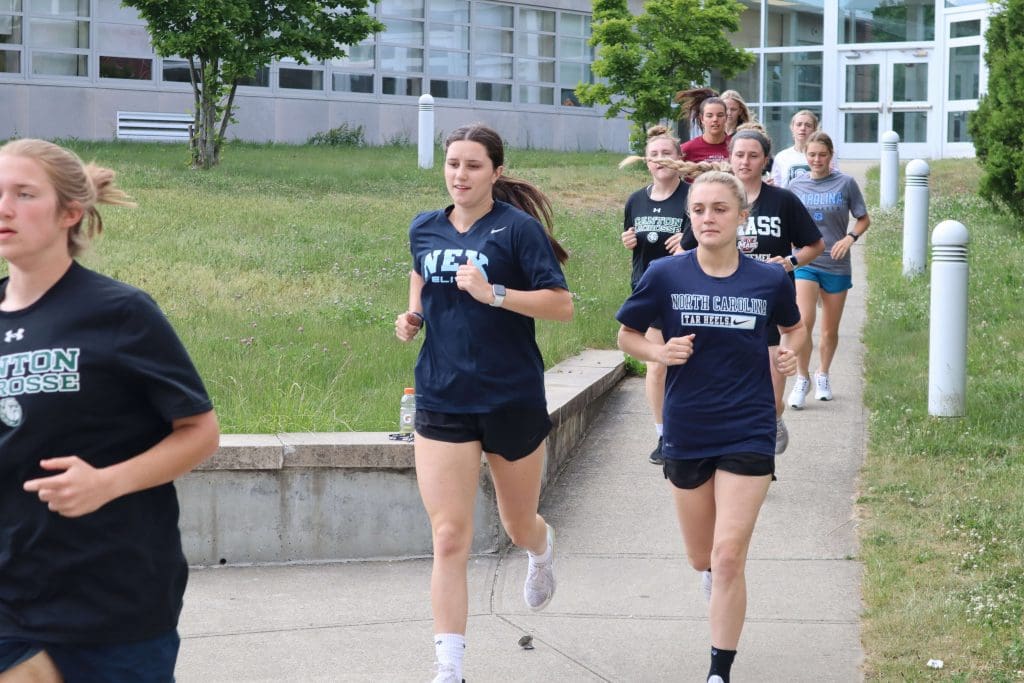
The High School Weight Room – Where Are The Girls?
Football players and other male athletes dominate the weight room at many high schools across the country. There is typically a disparity between male and female participation, whether before and after school or during physical education classes.
And at many schools, it is not because the weight room isn’t open to everyone. For example, many high school weight rooms have open gym hours that any student, male or female, can come and workout. So where are the girls at?
While we can lament the fact that girls are just not showing up, we should consider why they aren’t. There are barriers preventing female athlete training in high schools:
Stereotypes and misconceptions about weightlifting and gender.
Female athletes lack confidence or knowledge in the weight room.
The high school weight room environment is often intimidating and dominated by male athletes (Example: Boys working out with their shirts off).
Sport coaches don’t prioritize female athlete training during the season as other male sports do.
Beyond open gym hours before and after school, many physical education classes center around resistance training and the weight room. But these courses are often electives that students must choose to take. Molly Collins, a PE teacher at Pennfield High School in Michigan, describes what her classes looked like a few years ago,
“Almost 90% of my class rosters, if not more, were males. Whether it was a traditional physical education class or a weight training class, it was almost always all boys.”
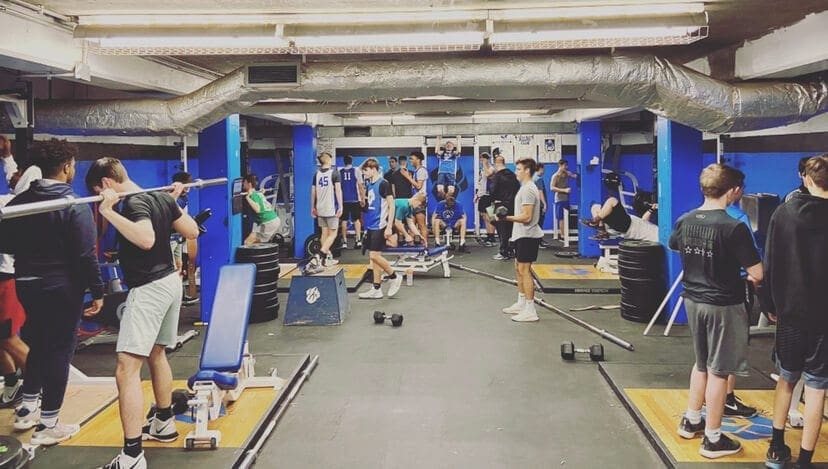
Learning From Female Athlete Training Success Stories
We shouldn’t shrug off or take lightly that the rate of female athlete training in high schools is well behind that of their male counterparts. Instead, we should consider what needs to be done in the world of high school female athlete training to boost participation and promote strength training for young women across the country.
To do so, we have pulled from schools across the country that have seen a dramatic increase in female athletes participating in strength and conditioning. While each school and setting is different, these keys to success help to illustrate the steps schools can take to promote strength training for female athletes.
The 5 keys to success are:
Start every student with a strong foundation
Foster an inclusive weight room environment
Contextualize and Connect Strength Training To Athletic Performance
Utilize Representative Resources
Evaluate Short and Long-Term Goals
Free Download!
The Ultimate Guide to High School S&C
Learn how to navigate the many logistical challenges that face high school coaches, and get insights into how to program effective workouts.
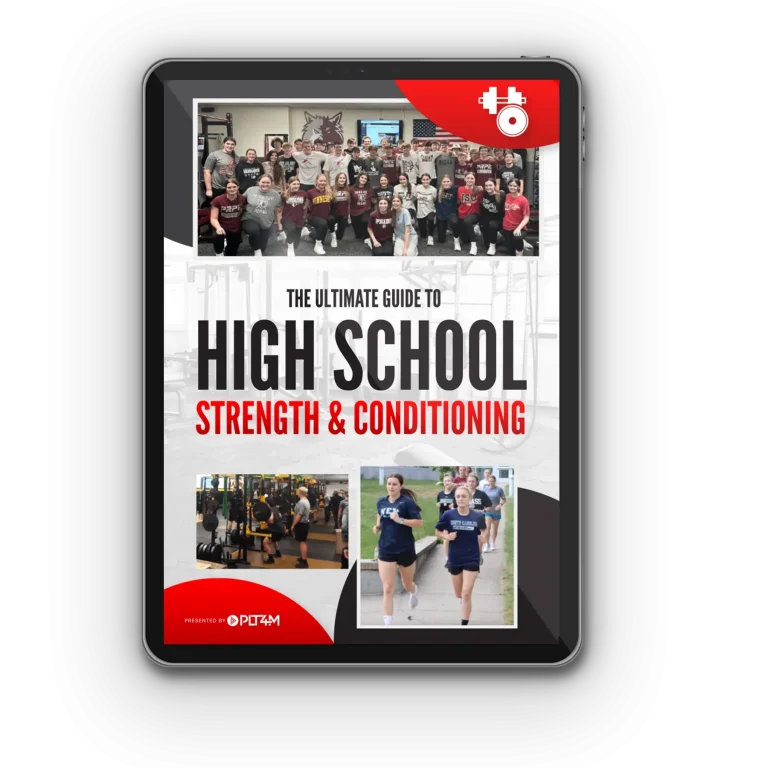
1) Start Every Student With A Strong Foundation
Often when we look at the disparity between male and female athlete training numbers, we take a reactive approach. How can we get more varsity athletes into weight training?
But rather than a reactive approach, let’s be proactive and start every student early. One of the best ways to remove stigmas and stereotypes surrounding the weight room is to introduce students to the world of strength training in middle or early high school.
And while the burden of this introduction often falls on sports coaches with limited experience in the weight room, one of the best places to get every student started is in physical education class.
At Wayland Union High School in Michigan, the strength and conditioning program has grown to over 300 students in the last few years and consists of many female athletes. To achieve this, Justin Sherrod, PE teacher and strength coach, has focused on his introductory 9th grade PE classes,
“Through the intro class, we make sure ALL first-year students are competent and confident in the weight room. We spend a lot of time going over movements and exercises so that they are ready to go when they get to the advanced class.”
By giving every student a strong foundation that they are confident in the weight room by 9th grade, more students, especially female athletes, are likely to continue with strength and conditioning classes and programs for the rest of their high school careers.
2) Foster an Inclusive Weight Room Environment
Saying that gym is open to all students or athletes isn’t enough. There needs to be a concerted effort to make the weight room a welcoming and accessible environment for all students.
This doesn’t mean lowering expectations for female athletes in the weight room. But it does mean that coaches and other school members should take a serious look at the weight room culture. Is this a place young women can feel safe and confident?
First and foremost, female athlete training shouldn’t have to take a back seat to equipment and resources. Often, male athletes can take over the weight room quickly. Spreading out and taking every rack makes it challenging for female athletes to get their workouts done.
Secondly, is the necessary weight room etiquette and hygiene being followed? It may come as a surprise, but many high school weight rooms still allow male athletes not to wear shirts when they workout.
In addition, general clean up and wiping down of equipment is not always followed and maintained. And while that might seem okay to a group of young male athletes working out together and sharing equipment, it can become the reason (and a fair one) a female athlete is uncomfortable to workout.
The weight room should be treated like any other space or classroom at the school. Let’s make the high school weight room a place for everyone.
Ready to Learn More?
Schedule a free 10 minute consultation to see how the PLT4M system can help save you time, and empower student learning!
3) Contextualize and Connect Strength Training To Athletic Performance
No matter the sport, many young athletes want to do everything they can to be elite athletes. It is essential to show today’s female athlete that strength training is more than just about building muscle and “getting bigger.” Instead, we can highlight the connections to physical performance on the field, court, and track.
Educating our students about the benefits and connections from the weight room to sports performance can be why more female athletes buy-in.
At St. Paul High School, Rusty Fuller has developed a strength and conditioning program that has seen more and more female students participating. And as more students have experienced this, the girls’ teams’ success has gone up. Teams like girl’s basketball and volleyball have made deep playoff runs, and Rusty says it has led to more people noticing the impact of the strength training program,
“People have seen the change in our students as they head out to different camps and tournaments across the state. I think it stands out because they are not just bigger or faster, but their overall athleticism has improved from the strength and conditioning program.”
4) Utilize Representative Resources
In recent years, there has been a major focus on how much representation matters. But the representation in the world of female athlete training is distorted. The world of female athlete training, especially on social media, is often sexualized and manipulated, focusing on all the wrong reasons for young women to workout.
To empower young athletes, we should positively showcase female athlete training. And while we hope to see more female strength coaches, sports coaches, and physical education teachers, we should all work to introduce resources that highlight positive female athlete training.
At Owensboro High School in Kentucky, Blake Roberts has multiple female strength and conditioning classes. As he sees many of them intimidated by the weight room, he uses instructional videos that showcase female coaches and instructors teaching and performing different exercises and movements. Blake says this has been big for his female athlete training program,
“The weight room can be intimidating, especially for some of our female student-athletes. The instructional videos give students a straightforward mental checklist for proper form and technique.”
Bonus Content! PLT4M believes in the power of representation. Check out a PLT4M instructor break down the medball squat!
5) Evaluate Short and Long-Term Goals
The long-term goal of high school strength and conditioning is that every student, regardless of gender, reaps the benefits of a consistent training program. In addition, the hope is that male and female athletes can all coexist within the weight room before, during, and after school. And many of the keys to success already listed, especially starting students early, can help accomplish this goal.
But as many schools look to get a higher level of female athletes in the weight room sooner, they search for ways to kick start the female athlete training program. And although not every state allows this, many schools turn to a female-only offering. This can be a female-only weight lifting class or after school time.
At Pennfield High School in Michigan, Molly Collins created a Women in Fitness class to help get more female students involved in physical education and strength and conditioning.
“I have noticed the women that have taken and excelled in my women’s fitness class are more in touch with the way their bodies move. With the confidence built in the Women’s Fitness class, women then feel comfortable transitioning into mixed-gender weight training or other physical education classes.”
While Molly did this in a PE setting, sports coaches or strength coaches can also work to do this before or after school if appropriate. Again, the long-term goal is that we can get to a place where stereotypes and stigmas no longer create barriers to female athlete training. Still, in the meantime, we should evaluate what can be done to promote more participation for our female athletes.
Key Takeaways on Female Athlete Training
If you have made it this far in our article exploring female athlete training, you might be asking about what type of workouts and training sessions female athletes should be doing.
We often get inquiries from coaches about their female athletes and what training programs they should be doing, how they should be different, etc. The bottom line is, here at PLT4M we do not differentiate between our male and female athletes, and we hate when girl athletes are told they aren’t supposed to train like the boys! As far back as 1990, the NSCA itself wrote a position statement that said females are essentially no different from males regarding training. They reap the same benefits and should indeed engage in the same types of physical training.
Long story short, our stance is that we are all human, all athletes, and we should approach fitness and training in the same way. We train to become better athletes, more dynamic versions of ourselves, and your program should work for ALL of your athletes.
And while we believe that, we should consider the 5 keys to success so that our young women can reap all the benefits of strength and conditioning.
If you are a coach, teacher, or administrator that wants to take action, reach out to PLT4M and let us help you take the next step in empowering your female athletes.
Ready to Learn More?
Schedule a free 10 minute consultation to see how the PLT4M system can help save you time, and empower student learning!
